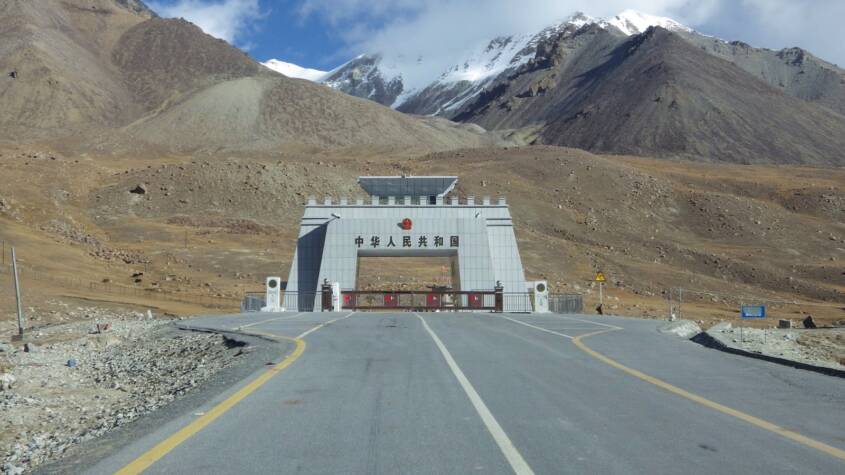KKH harnesses ancient links between Kashmir, Xinjian: Masud Ahmad Khan
Masud Ahmad Khan, an analyst, writes that the Silk Route refers to all the routes leading west out of China to Central Asia, the Middle East, the subcontinent and beyond. According to Rajatarangini, a link between Kashmir and Xinjiang, especially including the kingdoms of Khotan and Kashgar, has existed since ancient times. The locals call the route, to Kashgar from Gilgit, the Silk Route which starts in Gilgit along the Hunza River, reaches the Passu village and then crosses the river towards the Kilk pass to enter Taghdumbash (Xinjiang) and then to Tashkurgan, Yarkand and Kashgar. Hunza was a transitory point as it was used by caravan travelers and pilgrims. The road passes through the Himalaya, Hindukush and Karakoram ranges and much of the highway follows the old Silk Route. About 1,000 Chinese and Pakistani workers lost their lives during the construction of KKH. The importance of Gilgit-Baltistan has increased with its construction as well as with the start of the CPEC. CPEC is a project of the Belt and Road Initiative to promote economic cooperation through the Gwadar port, energy, infrastructure and industrial cooperation between the two countries.
The Silk Route refers to all the routes leading west out of China to Central Asia, the Middle East, the subcontinent and beyond. In 1877, Baron Ferdinand coined the term Silk Route as he produced maps during his stay in China and depicted trade routes between China and Europe. Marco Polo was the one who claimed to have travelled the entire length of the Silk Route, from Europe to China, in the 13th century. Mule caravans for centuries carried silk, tea and other goods from China to be bartered for gold and spices from the subcontinent.
According to Rajatarangini, a link between Kashmir and Xinjiang, especially including the kingdoms of Khotan and Kashgar, has existed since ancient times. The locals call the route, to Kashgar from Gilgit, the Silk Route which starts in Gilgit along the Hunza River, reaches the Passu village and then crosses the river towards the Kilk pass to enter Taghdumbash (Xinjiang) and then to Tashkurgan, Yarkand and Kashgar. Hunza was a transitory point as it was used by caravan travelers and pilgrims.
With the passage of time, the Silk Route was replaced the Karakoram Highway (KKH). The plans for the construction of the KKH were made in 1958 to 1959. Work on the construction started in 1966 and the Frontier Works Organisation (FWO) was created for this purpose. At the peak of construction, Pakistan had some 15,000 men working while the Chinese side also numbered in thousands. KKH was completed in 1978, and officially opened on May 1, 1986. The construction of road was completed in 15 years and it runs through some of the world’s most rugged terrains, superb landscape and breathtaking panorama.
The road passes through the Himalaya, Hindukush and Karakoram ranges and much of the highway follows the old Silk Route.810 Pakistani and 82 Chinese workers lost their lives during construction. The importance of Gilgit-Baltistan has increased with its construction as well as with the start of the China-Pakistan Economic Corridor (CPEC). CPEC is a project of the Belt and Road Initiative to promote economic cooperation through the Gwadar port, energy, infrastructure and industrial cooperation. The 64 billion dollar project includes a network of roads and railway infrastructure along with hydro power plants. CPEC will link Kashgar in the Xinjian region with the port city of Gwadar in Pakistan. The distance from Gwadar to Khunjerab is 2463 kilometers and the Gwadar port will save at least more than 16,000 kilometers of distance for China. The project is likely a game changer for Pakistan in general and Gilgit-Baltistan in particular.
CPEC will bring about a lot of changes in the region, particularly in regards to infrastructure, construction of roads and hydro power projects. It would formalise business opportunities for the people of Gilgit-Baltistan who are already doing business with China and remain in continuous contact with the Chinese region of Xinjian for business activities.
India is continuously raising a question on the construction of CPEC by stating that Gilgit-Baltistan is a disputed region. India is feeling threatened by the Chinese presence next door as well as by CPEC. It has been confirmed that India has established a special cell at the cost of 500 million dollars to sabotage CPEC. Last year, Foreign Minister Qureshi said that India is spending 800 crores in Balochistan with the intent to damage CPEC and has recruited 700 members of the militia.
The Gilgit-Baltistan government has already been warned by the federal government of potential terrorist attacks in the region to sabotage the CPEC. The US also has concerns about CPEC and is wanting to contain China. CPEC has been included as a full-fledged subject at the US National Defence University. The hostile factions carrying out terrorist attacks against Chinese and Pakistan interests are trying to give the message that the project is not safe. The recent attack at the parking of the Serena Hotel is just an example.
Earlier, India was also involved in terrorist attacks on the Pearl Continental Hotel in Gwadar and the Chinese consulate in Karachi. India is beyond any doubt, directly involved in terrorism–especially in Balochistan. Pakistan has already exposed India’s nefarious design against CPEC. DG ISPR last year exposed India’s links, financing, training and sponsorship of terrorism to the world. Pakistan’s security forces will continue to thwart all hostile attempts to sabotage the project and destabilise the country.
Chinese envoy Zhao Shiren urges students to uphold integrity and strengthen China-Pakistan ties
LAHORE:The Consul Generals from several countries and other distinguished guests attended …











